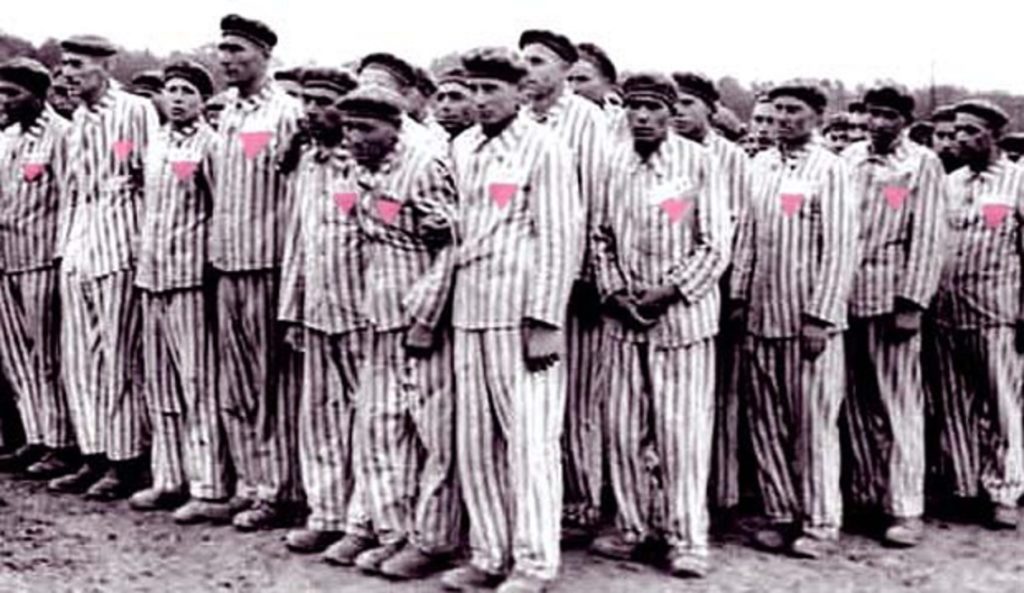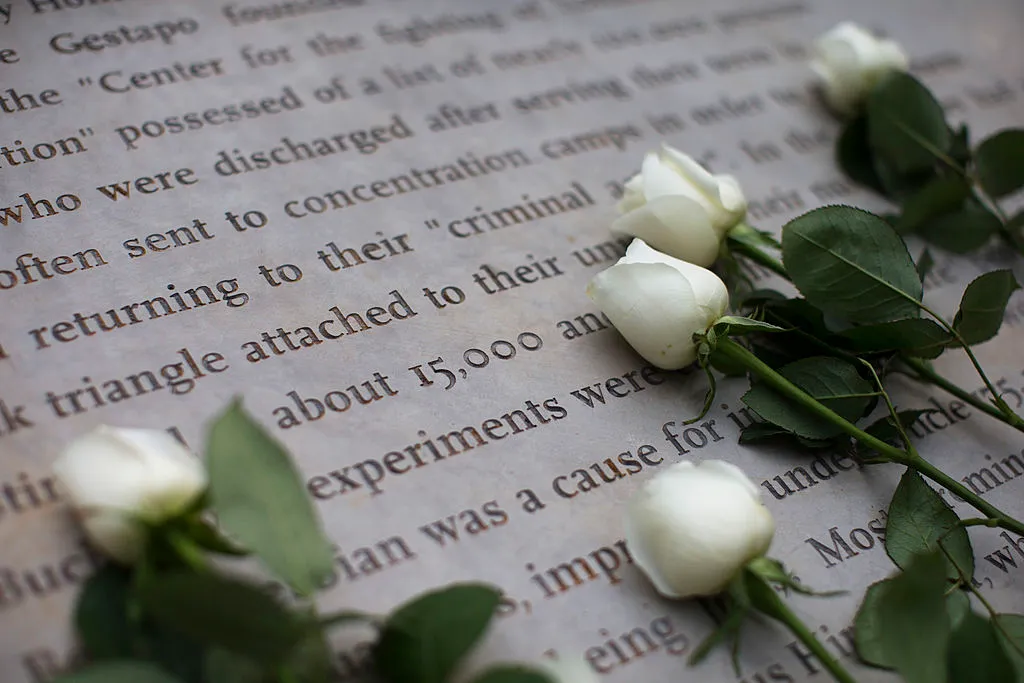
Gay men in a Nazi concentration camp
It is 75 years today since Auschwitz concentration camp was liberated, which signalled the beginning of the end of one of the most horrifying chapters in modern history: the Holocaust.
Every year on this day, the world remembers the millions of people who lost their lives during the Holocaust. Up to 17 million people were exterminated under the Nazi regime, with six million Jews included in that number.
The Holocaust was, at its core, a wide-scale and violent persecution of minority groups – and LGBT+ people were not exempt. Between 1933 and 1945, an estimated 100,000 men were arrested for homosexuality in Nazi Germany. 50,000 were sentenced for their “crimes” and an estimated 5,000-15,000 gay men were sent to concentration camps.
Sociologist Rüdiger Lautmann has estimated that up to 60 per cent of gay men incarcerated in concentration camps died during their imprisonment. But these figures only account for those who were persecuted directly for their sexuality. Among the millions of people killed in the Holocaust, there were undoubtedly many more LGBT+ people who kept their sexual and gender identities a secret as they went to their deaths.
The world today is a very different place, but the threat of violence is never too far away for minority groups. Hate crimes have surged across the world, including in the UK and the United States. There was a 37 per cent surge in hate crimes against transgender people in the UK last year, along with a 25 per cent rise in hate crimes based on sexual orientation. Meanwhile, there was a 14 per cent rise in disability-based hate crimes, an 11 per cent rise in hate crimes based on race, and a three percent rise in hate crimes based on religion.
In the United States, LGBT+ people, Jewish people and Black people are the most targeted groups. 2018 was the “worst year ever for anti-semitic killings in the United States”, according to the Center for the Study of Hate and Extremism (CSHE) at California State University San Bernardino.
These figures serve as a reminder that – while the Holocaust is part of our history – the lingering hatred of anybody seen as “different” is always ready to rear its head.
Holocaust Memorial Day: The Nazis immediately started targeting minority groups when they seized power in 1933.
When Adolf Hitler and his Nazi Party seized power in Germany in July 1933, the dictatorship moved to persecute and murder minority groups, including Jews, LGBT+ people, the Romani people, and political prisoners.
Beginning in 1933, the Nazis built a network of concentration camps throughout Germany, where “undesirable” groups were detained, including Jewish people and gay men.
Those “undesirables” often had their uniforms branded in concentration camps so officers knew what kind of person they were dealing with. Many gay people had their uniforms branded with an upside-down pink triangle. The symbol set them apart as sexually deviant, with paedophiles and rapists given the same mark.
Like other prisoners, those who wore the pink triangle were brutalised in ways that most people today cannot even begin to comprehend. Gay men were subjected to torture, including forced sodomy using wood, and many were experimented on. The Nazis also implemented a form of conversion therapy, whereby gay men were forced to sleep with female sex slaves.

Charting the history of other members of the LGBT+ community in the Holocaust is more challenging as they were not given their own distinct categories. Lesbians were sometimes made to wear a black triangle to denote that they were “asocial”, according to Benno Gammerl, a lecturer in Queer History at Goldsmiths, University of London.
There was no solidarity for the homosexual prisoners; they belonged to the lowest caste.
Meanwhile, trans people were generally lumped in under the same category as homosexuals under the Nazi regime, meaning many also wore the pink triangle. There is evidence that trans people, like gay people, were specifically targeted. On November 11, 1933, the Hamburg City Administration asked the head of police to “pay special attention to transvestites” and to “deliver them to the concentration camps”.
The end of the Second World War did not spell the end of the persecution of gay and bisexual men.
Unfortunately, when the allies liberated the concentration camps, many of the gay people who were imprisoned were not set free. Instead they were transferred to prisons, then under the control of the Allied forces. Same-sex sexual activity between men remained illegal in East and West Germany until 1968 and 1969 respectively.

No comments:
Post a Comment